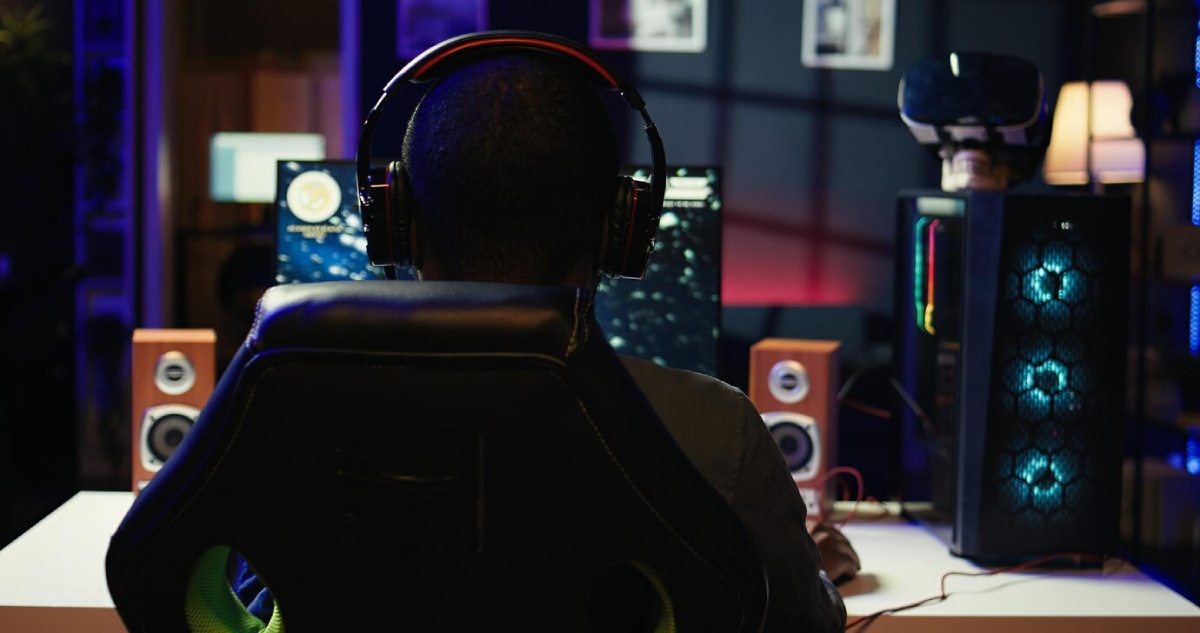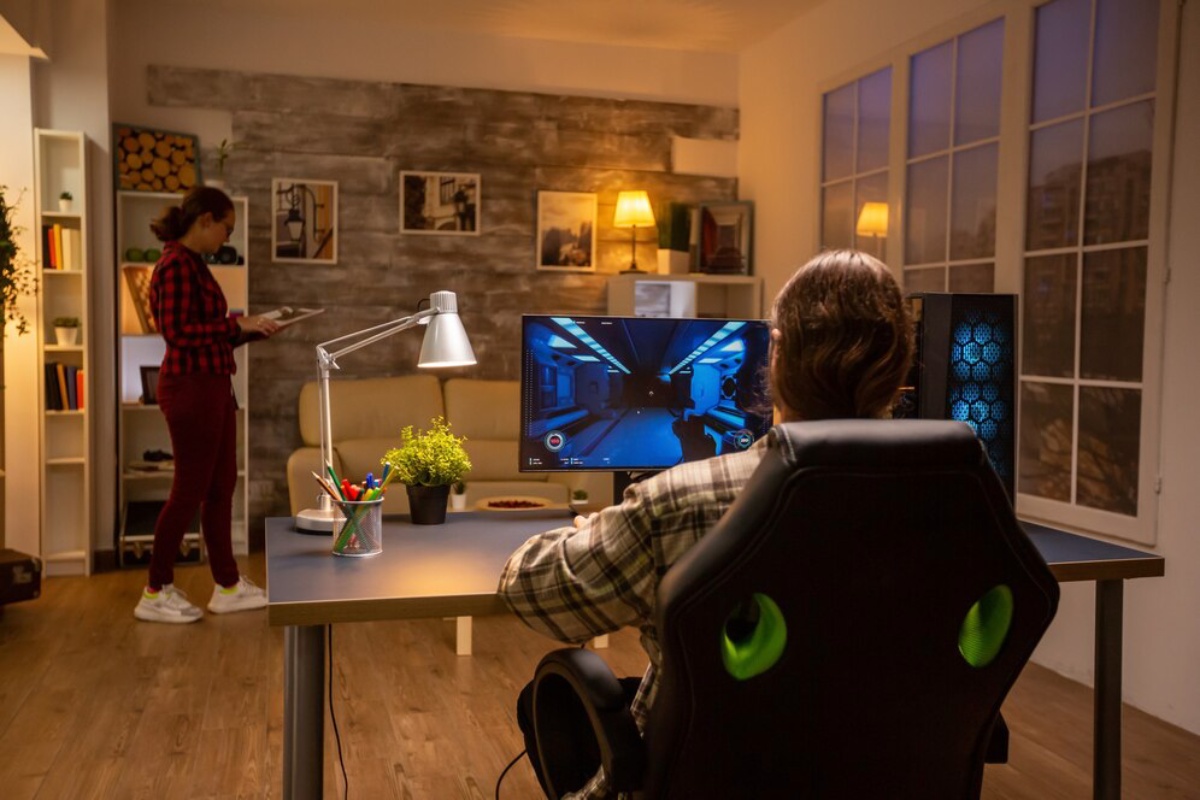The Gaming Blog

How to Organise a Compact Gaming Setup in Small Rooms
Gaming setups have become increasingly sophisticated, often with sprawling desks, towering rigs, and elaborate lighting systems. But what if you’re working with a tiny bedroom, a shared apartment, or a dorm? The good news is that you don’t need an expensive room to enjoy a high-performance, visually stunning gaming setup. With smart choices and strategic organisation, even the smallest space can become a comfortable and efficient gaming haven.
In this guide, we’ll show you how to maximise your limited space with functional furniture, clever storage, and clean aesthetics — all while keeping comfort and performance at the forefront.
Understanding the Core: Why Compact Setups Matter

Why Small Room Gaming Setups Deserve Thoughtful Design
A cramped, cluttered gaming space isn’t just uncomfortable — it can affect your performance, focus, and enjoyment. A compact gaming setup, when properly planned, offers a minimalist yet highly functional environment. Key benefits include:
- Space Efficiency: Make the most of every inch without sacrificing comfort.
- Improved Ergonomics: Maintain healthy posture and reduce physical strain, even in tight quarters.
- Aesthetic Cohesion: A small, well-designed setup can look cleaner and more appealing than a cluttered large space.
- Performance Boost: A tidy, ergonomic environment supports better concentration and gameplay consistency.
Whether you’re streaming, gaming, working, or all three, a compact setup ensures you stay focused and comfortable without visual or physical chaos.
Core Elements of a Compact Gaming Setup

1. Space Planning
Before you buy anything, assess the space. Measure wall-to-wall and corner-to-corner. Account for outlets, windows, and door swings. Decide where your gaming desk can fit without obstructing movement or creating bottlenecks.
2. Efficient Storage
Small spaces demand smart storage. Think vertically with wall-mounted shelves or hanging organisers. Use under-desk storage, stackable boxes, or drawer units with wheels that tuck away neatly.
3. Ergonomics
In compact environments, it’s tempting to prioritise fit over comfort. Don’t. Use an ergonomic chair, adjust your monitor height, and ensure your keyboard and mouse are positioned to avoid wrist strain.
4. Clean Aesthetic
Minimal doesn’t mean boring. A consistent colour scheme, discreet lighting, and thoughtful layout can turn a small setup into a visual masterpiece. Less clutter means more impact.
Quick Checklist: Compact Gaming Setup Essentials

- Measure your space and identify usable areas
- Select a slim, multi-purpose gaming desk
- Choose monitors suited for size and layout (ultrawide or wall-mounted if possible)
- Prioritise vertical storage with wall-mounted shelves or pegboards
- Use an ergonomic chair with a slim footprint
- Employ smart cable management tools
- Opt for adjustable, non-invasive lighting
- Personalise without overdecorating
Step-by-Step Guide: Setting Up in a Small Space
Step 1: Plan the Layout
Start by sketching your room. Identify corners, windows, and doors. The goal is to make the most of the space without blocking movement or creating tight walkways.
- Corner placement is ideal to isolate your setup and reduce foot traffic interference.
- Wall-mounted monitors and shelves can drastically improve layout options.
Tip: Ensure there’s enough space to swivel your chair and comfortably use your keyboard and mouse without bumping walls or furniture.
Step 2: Choose a Compact Desk
Your desk is the anchor of your setup. Look for desks designed for small rooms — ideally 90–120 cm wide — with built-in features like:
- Shelving or drawers
- Cable passthroughs or rear cable trays
- Raised monitor stands to free desk space
Pro Tip: Foldable desks or wall-mounted drop-leaf desks can also be excellent options for ultra-compact rooms.
Step 3: Monitor Selection and Placement
For small rooms, screen real estate must be balanced with actual physical space.
- A single 27-inch monitor is often ideal.
- Consider a curved ultrawide to replace dual monitors.
- If you need dual screens, mount one vertically or use articulated arms to reclaim the desk surface.
Step 4: Seating and Ergonomics
Don’t sacrifice your back for a smaller footprint. Choose a chair that:
- It is compact but ergonomic
- Offers adjustable lumbar support and armrests
- Slides easily under the desk when not in use
Tip: Consider armless ergonomic chairs or kneeling chairs if width is a concern.
Step 5: Cable Management
Tangled wires are the enemy of any small-space setup. Use:
- Cable clips and adhesive cable holders
- Velcro or reusable zip ties
- Cable sleeves to bundle wires together
- Power strips are mounted under the desk to eliminate floor clutter
Pro Tip: Wireless peripherals reduce desk clutter and free up space.
Step 6: Lighting and Ambience
You don’t need towering lamps to create atmosphere.
- Use LED strip lights behind your monitor or under your desk for subtle mood lighting.
- Clip-on lamps or adjustable desk lights provide functional task lighting without consuming floor space.
- Set lighting to warmer tones in the evening to reduce eye strain.
Tip: Smart bulbs let you adjust brightness and colour temperature based on your game or mood.
Step 7: Personalise Thoughtfully
Decor adds personality, but overdoing it can make the space feel cramped.
- Use one or two floating shelves for collectables or figures
- Add a poster or wall print for visual interest
- Hang your headphones or controllers with wall hooks or racks
Pro Tip: Every piece should have a function — opt for slim desks, modular chairs, and hidden storage.
Important: Don’t position your setup in front of doors or windows unless it’s absolutely necessary.
Best Practices & Additional Insights
Modular Furniture
Look for desks, drawers, or shelving units that can be reconfigured. This allows you to evolve your setup over time without needing a full overhaul.
Vertical Organisation
Make the most of vertical space with:
- Wall-mounted pegboards
- Magnetic strips for tools or cables
- Stackable bins for game storage
Flexible Lighting
Choose adjustable RGB or white lighting to set the mood. Mount LED strips under shelves or behind screens to create depth and ambience without adding bulk.
Sound Management
Small rooms often create audio bounce. Use:
- A rug or mat under your chair to absorb sound
- Foam panels (if streaming or recording)
- Noise-cancelling headphones to maintain immersion without disturbing housemates
FAQs
How do I organise a gaming setup in a very small room?
Use compact furniture, vertical storage, and eliminate unnecessary items. Keep only what you use daily on your desk and store the rest.
Can I still have a dual-monitor setup in a small space?
Yes — consider using wall-mounted monitors or a single ultrawide display. Monitor arms can help position screens without taking up desk space.
How should I manage cables in a tiny room?
Bundle and route cables behind or under your desk using clips, trays, or adhesive holders. Consider wireless devices to minimise cable count.
What’s the best chair for a compact gaming setup?
Look for a slim, ergonomic chair with lumbar support. Avoid overly padded or wide models that take up valuable room.
Conclusion: Organising a Compact Gaming Setup in Small Rooms
Designing a compact gaming setup doesn’t require compromise — it just takes creativity and a bit of strategy. With the right furniture, smart cable management, and intentional design choices, you can build a setup that feels open, organised, and high-performing — all within the confines of a small room.
So go ahead — measure your space, plan your layout, and create a compact gaming setup that delivers big performance in a small footprint.









